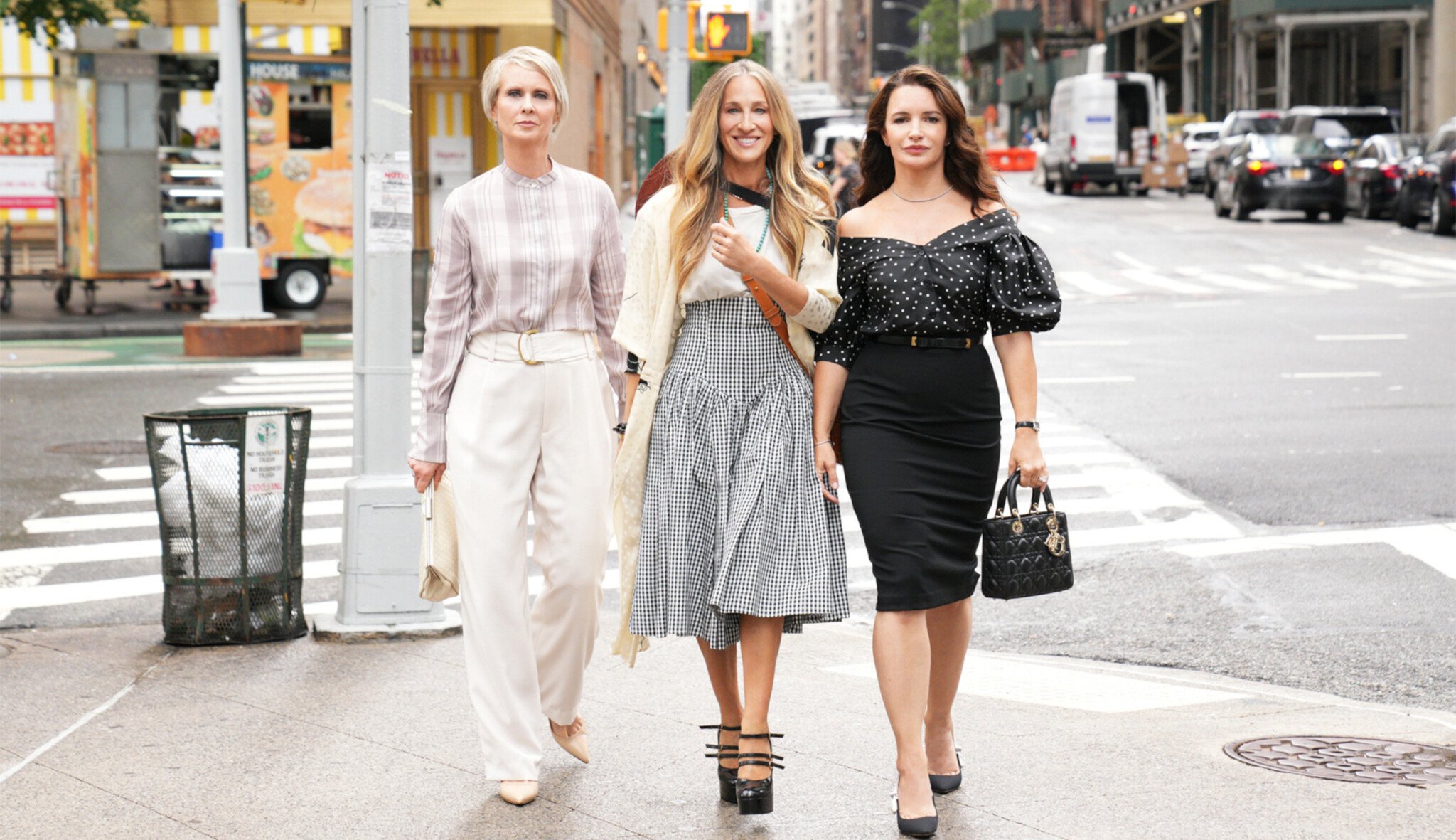Sex in the city. There are people who can memorize most of the soundings in this series. There are people who can identify each outfit of one of the four main heroines, associate it with a specific designer and accordingly identify a specific episode of the six seasons of the series. There are people who have had Sex in the City over and over again over that quarter of a century.
On the other hand, there are people for whom Sex in the City is ridiculous and is judged mainly by two often rehearsed films (although it is best to see the first few episodes of the very first series from 1998 and only then make an opinion). There are people who directly condemn Sex in the City and the behavior of its heroines and claim that such a series could not be created today. There are people who have completely missed Sex in the City and still do not understand its phenomenon.
And then there are the people who have simply loved Sex in the City for the past twenty-three years.
When almost a quarter of a century ago, this project caused a cable revolution in HBO, because he was talking for the first time about what was silent on the television screen until then, no one knew that a generational phenomenon would emerge. Literally, because his heroines were around thirty at the time. Today, they are all 55+. And they jumped into their roles again. Sex and the City was given a sequel called “And How It Was…” and became an Advent flagship produced by HBO Max.
There is probably no question that the news will become a hit from the point of view of the audience’s interest. Undoubtedly, all fans like to click and the critics and opponents of the original series will certainly like to see it. They are curious and hungry, as are their social networks, where poisonous saliva springs best. Business will not stop it, on the contrary, even negative advertising is advertising. The worst thing is not to talk about a project at all. However, this cannot happen to this novelty.
In addition, the original license is now worth billions – for example, only two not-so-successful feature films have raised over three-quarters of a billion dollars in cinemas of their time. So far, it’s safe.
In any case, the first four episodes that journalists had the opportunity to see (only the first two episodes are currently visible on HBO Go) suggest several things. First of all – nervousness.
The nervousness of the creators and actresses (who gradually became the producers of the series), whether they still have anything to tell even after twenty-three years, six seasons of the series and two not-so-successful films. Nervousness about whether the audience will accept them. Nervous about whether they will accept the missing Samantha (the absence of which is clarified by the first replicas of the script).
Nervousness about whether the heroine of Sex in the City can be gray-haired (the change in the color of Miranda’s hair becomes unnecessarily one of the motives of the first part, although the creators could naturally pass it on as a new fact). The nervousness of whether the new fashion outfits of luxury brands, which have inevitably become part of the phenomenon of the original series, will be liked in the new series, when they are now worn by not thirty-year-old but fifty-five-year-old heroines.
Quite nervously, clumsily and sometimes even very strange, more things seem to be happening in the first tens of minutes of the new series. And it’s not just Kristin Davis’ “improved” face by plastic surgeons that sometimes looks like Charlotte’s own parody. The solution to Samantha’s outage, which has been replaced by several non-white characters (the fact that all four heroines are white, the current woke culture blames Sex in the City perhaps the most) also has a screwing effect.
In addition to “Black Charlotte,” as Anthony characterizes Charlotte’s new friend from the ranks of wealthy Manhattan mothers, we also have a black law teacher who is repeatedly confronted by Miranda and even the non-binary character Che, the head of Carrie’s podcast, with her clumsy political, gender and racial correctness. that variety was not small.
Diversity actually looks a little different, but the effort to be indebted to a sufficiently new television culture and social demand is a hundred hunts from casting and replicas. Not to mention that the podcast that Carrie now earns, as well as her apparently successful Instagram account, seems like a caricature of herself.
Suddenly, what made Sex in the City (especially in the first two ranks of the 1990s) famous. Talk about sex. If the first series had no problem with any sexual practice, discussed in detail, Carrie suddenly turns to the word masturbation at the age of 55 and opposes sex being so “explicitly”. Ridiculous.
Fiasco? It seems that…
Despite all these reservations, however, the first four parts. And how was it going? suggest that the intention of the creators and actors may have worked quite well in the end. The necessary twist will bring an unexpected event at the end of the first episode, which will probably cause fans of Sex in the City a similar shock to that experienced rock fans Bobby Ewing in the Dallas series experienced in the 1980s.
In the face of their own mortality, the age and aging of the main characters are suddenly becoming a natural thing, not strangely discussed with ordinary coffee in the middle of the week. We are aging, we are leaving (someone to London), but unfortunately we are also dying and we have to face this fact.
From the second and third parts of the initial caricature and playing of the actresses, civil acting is suddenly decent and sometimes even sympathetic, in which Cynthia Nixon in the role of Miranda in particular clearly dominates, unnecessarily shrouded in an aura of constant embarrassment in the first episode.
From the screwed-up phrases about race and gender, there’s finally a story that doesn’t have to be bad at all. It may even end up in more series seasons than originally intended. The unexpected turnaround in the first episode plays a lot more possibilities for the script of the new series than just the shy talk about masturbation and semen delivered over the rice pudding.
Twenty years ago, they looked funny, but now suddenly they don’t work at lunch anymore. Sadness and darker tones can suit the new series – definitely more than the Diblik chirping about boys packing.
Miranda’s hug with her husband, a former “cute bartender” Steve, who suddenly needs a hearing aid, looks touching, not embarrassing and parodic. Two gray-haired couples, dressed in black, begging their almost adult son in the middle of the living room for a little show of compassion, are suddenly quite natural and real in their roles. A more serious position is always more functional than a comedy. This has always been the case with Sex and the City.
This could really be the case. We’ll see.
–


